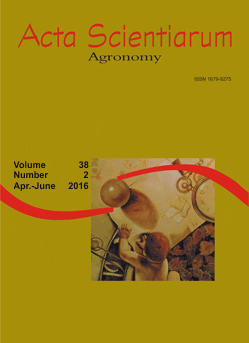<b>Soil water balance in different densities of <i>Pinus taeda</i> in Southern Brazil
Resumo
This study aimed to quantify and compare water balance components over the course of a year for different Pinus taeda planting densities in an oxisol in southern Brazil. This experiment was conducted on 6-year-old trees in a clay oxisol at the Monte Alegre Farm, a property of the Klabin Company. The experimental design was a randomized block with four replicates and five treatments with different amounts of soil coverage: T100 (100% coverage - standard planting coverage); (T75, 75; T50, 50; and T25, 25%), and; T0 (without cover - clearcutting). The soil water storage and actual evapotranspiration under non-standard conditions were determined in a weekly estimated soil water balance (SWB) with measured components. By the end of the year, the treatments had not reached field capacity or wilting point storage. The average value of total downward drainage was 100.2 mm, and the highest values occurred in the T75 and T100 treatments. The lowest population density (T25) had the highest actual evapotranspiration (ETr), due to the growth of the remaining Pinus taeda trees. The highest evapotranspiration occurred in September, due to the resumption of Pinus taeda growth.
Downloads
DECLARAÇÃO DE ORIGINALIDADE E DIREITOS AUTORAIS
Declaro que o presente artigo é original, não tendo sido submetido à publicação em qualquer outro periódico nacional ou internacional, quer seja em parte ou em sua totalidade.
Os direitos autorais pertencem exclusivamente aos autores. Os direitos de licenciamento utilizados pelo periódico é a licença Creative Commons Attribution 4.0 (CC BY 4.0): são permitidos o compartilhamento (cópia e distribuição do material em qualqer meio ou formato) e adaptação (remix, transformação e criação de material a partir do conteúdo assim licenciado para quaisquer fins, inclusive comerciais.
Recomenda-se a leitura desse link para maiores informações sobre o tema: fornecimento de créditos e referências de forma correta, entre outros detalhes cruciais para uso adequado do material licenciado.




















































